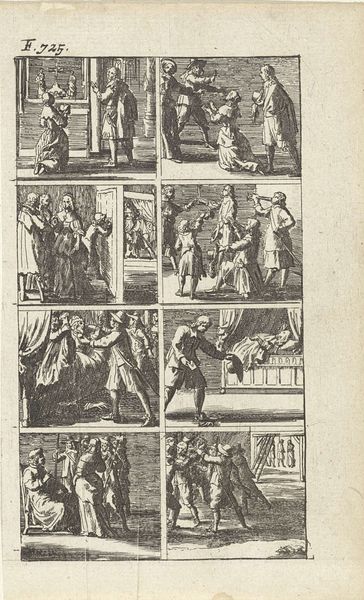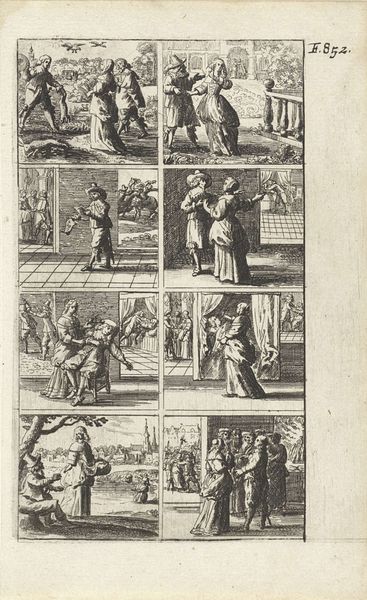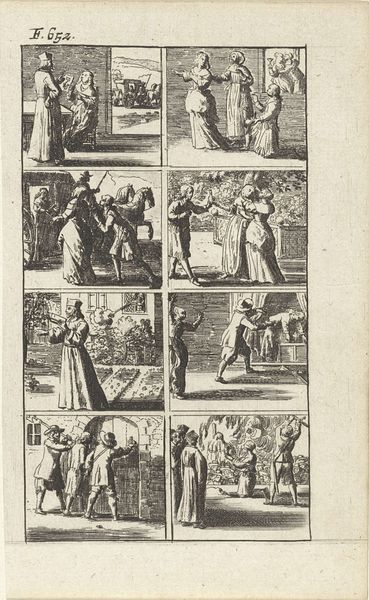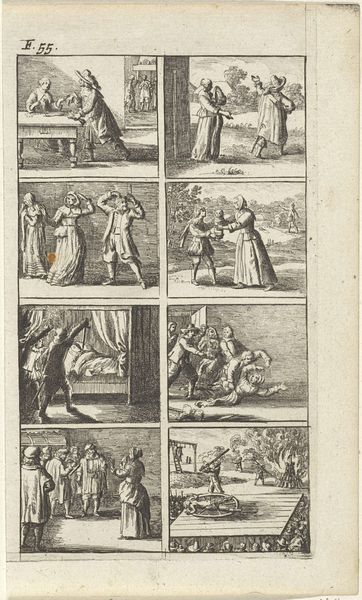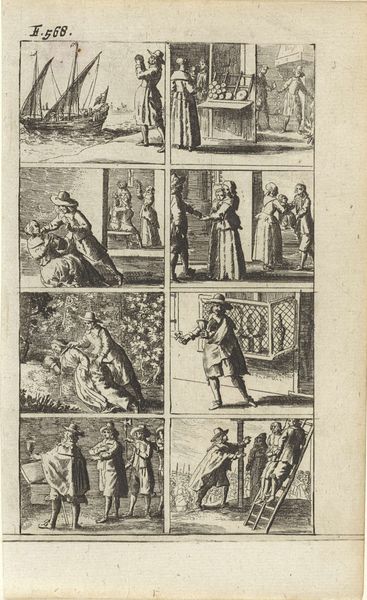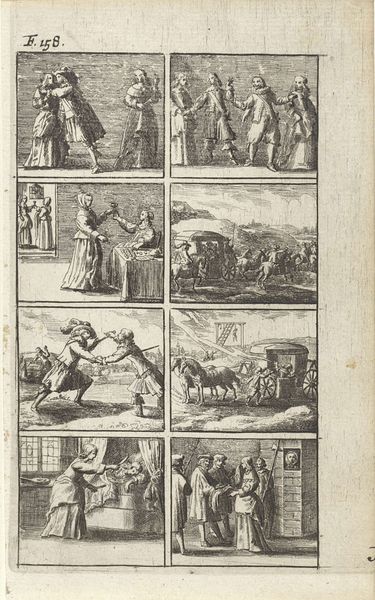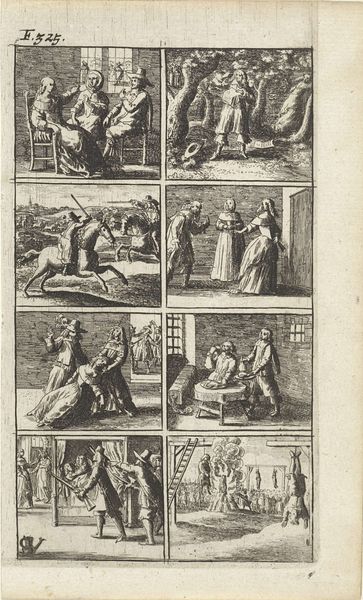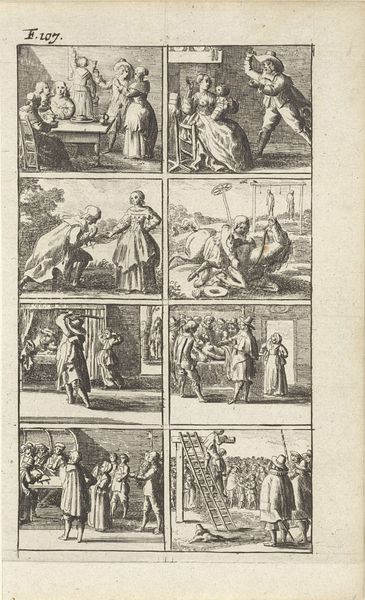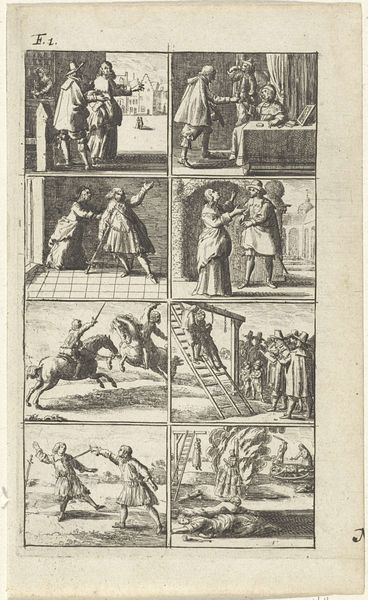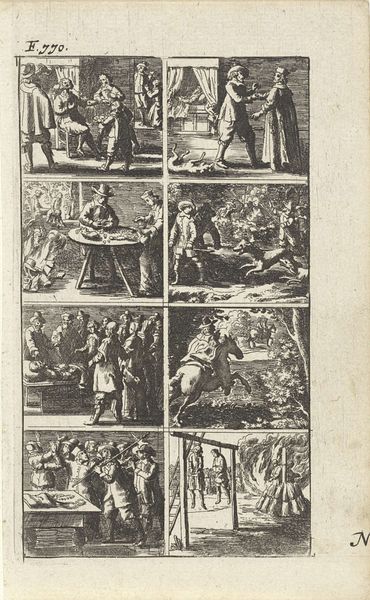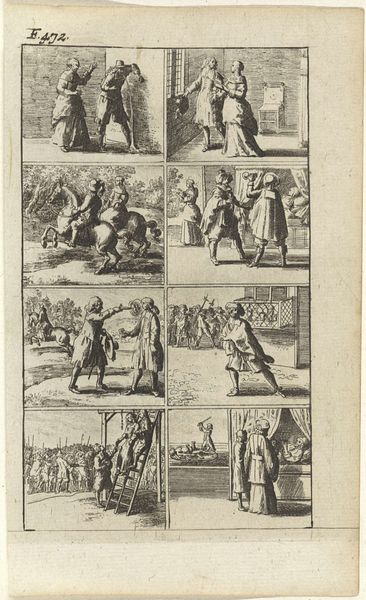
Verhaal met voorstellingen van moord en doodstraf (F. 618.) 1667
0:00
0:00
abrahamdirckszsantvoort
Rijksmuseum
print, engraving
#
narrative-art
#
baroque
# print
#
figuration
#
line
#
genre-painting
#
history-painting
#
engraving
Dimensions: height 155 mm, width 94 mm
Copyright: Rijks Museum: Open Domain
Curator: What a stark piece, wouldn't you agree? An inventory of cruelties rendered in precise detail. Editor: Absolutely, a visual feast of violence and order all at once. Is this the “Verhaal met voorstellingen van moord en doodstraf” by Abraham Dircksz. Santvoort, dated 1667? Curator: Indeed. It is currently held here at the Rijksmuseum, and what we are looking at here is an engraving, a print. Santvoort has depicted multiple scenes in small panels, a rather fascinating way to relay narratives, as he focuses his view upon different instances of capital punishment. It reminds me somewhat of medieval morality plays… or the format of comic strips that would evolve centuries later! Editor: The scale amplifies that starkness. It looks like something made for a book or handbill, easy to distribute. What was it printed on? Linen rag? Curator: Yes, very likely. Linen would have given it the necessary robustness for distribution. The material realities here speak to this function as a broadly accessible text. Now observe, if you will, the garments worn by the figures: robes and draped fabrics, rendered to denote innocence or authority… a system of symbolism through clothing. Editor: Precisely, and that raises all sorts of questions about Santvoort’s own context: Who was employing him? What kinds of wages would someone be making for this kind of detailed and grim work? It must have been quite costly, I suppose, due to labor. Curator: I do agree that labor should be front and center in discussions about the production of historical works such as these. To see these iconographies of power and piety being enacted as part of ritualized violence speaks to how deeply rooted the death penalty was. One can sense that Santvoort has invested some part of himself in these depictions; notice how the eyes of the victims almost demand something from us. Editor: I’d also push us to remember all the toxic materials used in creating this. What price did Santvoort and other craftsmen pay in terms of health for the ability to etch this plate? Curator: Thank you, that’s a salient point about human costs often overlooked. It definitely reframes the supposed sophistication of such scenes when one confronts their own implication in human exploitation. Editor: Ultimately, an encounter such as this engraving requires an acknowledgment of its complex social implications in order to address any claim to 'pure' aesthetic enjoyment. Curator: Agreed. What Santvoort achieved resonates because the weight of symbols and the materiality intersect—and can never quite escape from each other, which perhaps makes for something enduring despite, or rather due to, its uncomfortable implications.
Comments
No comments
Be the first to comment and join the conversation on the ultimate creative platform.

